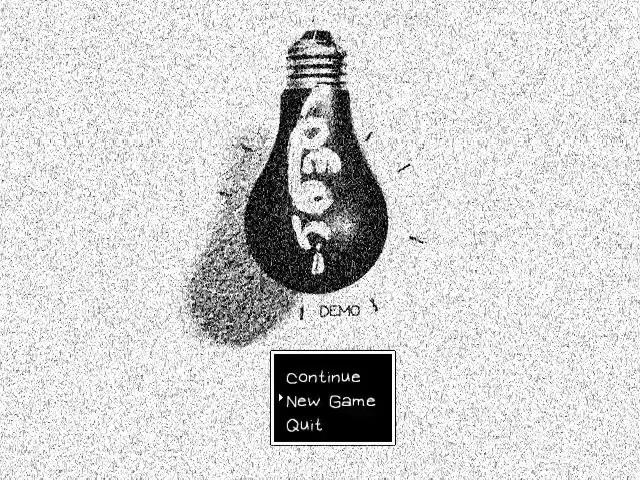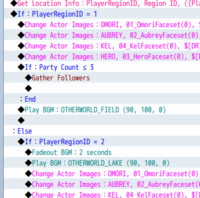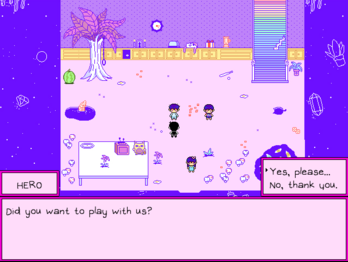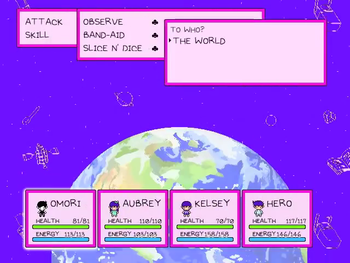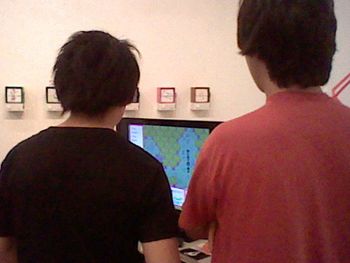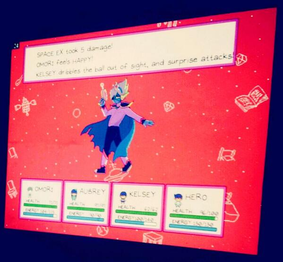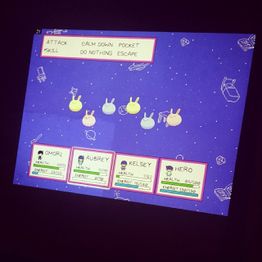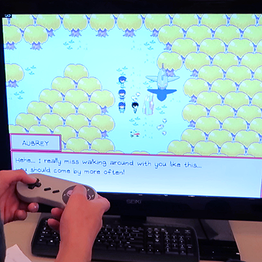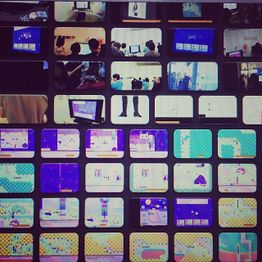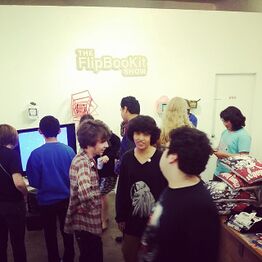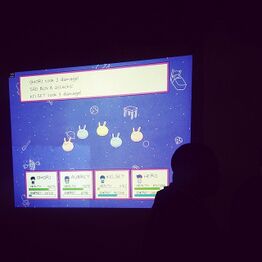OMORI (partially found alpha demo of indie psychological-horror role-playing game; 2014)
OMORI is an indie RPG created by artist and clothing designer OMOCAT, released onto Steam on December 25th, 2020, and on consoles on June 27th, 2022. It is widely critically acclaimed for its story and visuals and retains a large cult following. The plot of the story was originally based on a series of illustrations and blogs featuring a character known as "Omoriboy" that lasted from December 2011 to March 2012. On April 24, 2014, a Kickstarter and trailer were launched to turn the story into a video game. The Kickstarter was a success as over $200,000 was raised for it, nearly 10 times its original goal.[1]
Background
Following the launch, the team put together a demo for fans to try out and give feedback at GR2's Game Night on May 3rd, 2014, and JPOP Summit on July 19-20, 2014.[2][3][4] This version later became known as the 2014 Demo, Alpha Version, or the GR2 Build. These two events were the only times it was made playable to the public, and only the dev team and a single Kickstarter backer, found to be the company Sanshee[5] that got to beta test currently have known access to it.
The demo is notable in that it was made in RPG Maker VX Ace before the team made the switch to the RPG Maker MV engine sometime in late 2014 for performance upgrades, which would become the engine for the released version.[6] According to Archeia, one of the lead programmers of the game, the team had to make compromises under the original engine and the UI showcased wasn't meant to be final and only be a part of the demo.[7]
Details
This version contains various notable differences, including different graphics and music. The battle UI and system resembled that of Earthbound with static pixel-art sprites instead of the moving drawings in the final version. The background was also a moving parallax instead of the static dithered images present in the final build.[8]
Otherworld, one of the game's areas, also looks significantly different with it more resembling a grassland with houses scattered about rather than an alien campsite. There was also a yellow forest filled with Moon Bunnies and melons that seemed to be replaced with Junkyard.[8]
There were also several other noticeable UI differences, such as the window boxes being bright pink in the main game and being the familiar black and white color in White Space and the title screen. The official gameplay demo video also showcased Aubrey having a voice line when she spoke.[8]
People familiar with the demo also say that you had the option to choose your gender in the game and that the demo ran up until you defeated Space Boyfriend.
It should be noted that there are minute differences in some screenshots, such as the battle UI comparison from the Kickstarter to the actual demo, leading people to believe that there are several versions of this demo.
Archival
Existing media from the demo, such as music and screenshots, have been posted publicly on the Kickstarter, the OMORI Sound Team Soundcloud, and the OMOCAT YouTube channel.[1] However, other pieces of media such the original versions of Trees..., You Cannot Go Back and the full version of White Space as well as the end credits theme of the demo have yet to surface. It is also unknown who exactly composed the currently existing unused tracks, whether it was Jami Lynne or Pedro Silva.
The demo's title theme, titled Remember Me. Composer unknown.
Old version of Lost at a Sleepover by Pedro Silva and Jami Lynne.
Old version of Sugar Star Planetarium by Pedro Silva.
Old version of Lost, Then Found! by Pedro Silva and Jami Lynne.
Old version of Stardust Diving by Jami Lynne.
Some of the sound effects have been attempted to be isolated:
The official gameplay demo footage also leaves out a lot of the content, and as such neither footage nor files of the rest of the game have surfaced publicly.
There exists some leftover source code from the files of the Kickstarter Demo, but due to it being ported over to MV it is unclear how much of it has been modified.
Gallery
Images
Footage
VideoService "vine" not recognized.
VideoService "vine" not recognized.
Videos
See Also
References
- ↑ 1.0 1.1 Original Kickstarter page detailing background information and plans for the game. Retrieved 21 Feb '23
- ↑ Kickstarter update detailing the OMORI @ GR2 event. Retrieved 21 Feb '23
- ↑ OMOCAT's Tumblr post announcing the pop-up shop and playable demo. Retrieved 21 Feb '23
- ↑ Brief news post from GR2 talking about the event. Retrieved 29 May '23
- ↑ Information about the company that shares the same logo as the top Kickstarter backer. Retrieved 6 January '24
- ↑ Development progress update from Archeia, August 24, 2015. Retrieved 21 Feb '23
- ↑ Dev notes from Archeia, May 13, 2015. Retrieved 21 Feb '23
- ↑ 8.0 8.1 8.2 Official gameplay of the demo. Retrieved 21 Feb '23
